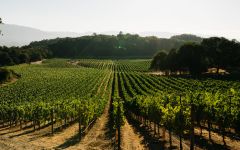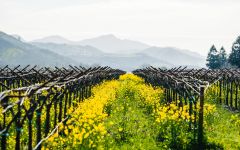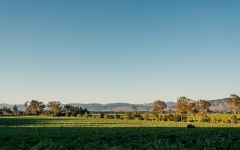Heitz Cellar Grignolino Rose 2016
-
Wine
Enthusiast


Product Details
Your Rating
Somm Note
Winemaker Notes
Professional Ratings
-
Wine Enthusiast
Heitz has made this stellar rosé from the rare Grignolino grape since 1961. Ruby grapefruit-red, it's sultry with strawberry, watermelon, orange zest and salty spice flavor, highlighted with vibrant floral aromas.
Editors' Choice
Other Vintages
2018-
Wilfred
Wong
-
Wine &
Spirits -
Wine
Enthusiast









Family owned since its founding in 1961, Heitz Cellar’s legacy runs as deep as the roots throughout the Napa Valley; a winery legend that has helped shape the history of Napa Valley winemaking. In the late 1950’s, pioneering vintner Joe Heitz ushered in Napa’s modern era with his iconic, globally celebrated wines, including Napa Valley’s first vineyard-designated Cabernet Sauvignon, the renowned Heitz Cellar Martha’s Vineyard. Fifty-eight years of the Heitz family’s dedication to viticulture, stewardship, and classic winemaking, maintained the winery’s notoriety as a benchmark amongst its peers in California and Europe.
In April, 2018, Heitz Cellar entered an exciting new chapter as this rich legacy was passed into the hands of the Lawrence family, whose deep roots in agriculture and commitment to the same core values of fine winemaking made it a perfect match. The wines are made with an unwavering commitment to quality from organically farmed, 100% Napa Valley fruit, and a commitment to the sustainability of Napa Valley.

Whether it’s playful and fun or savory and serious, most rosé today is not your grandmother’s White Zinfandel, though that category remains strong. Pink wine has recently become quite trendy, and this time around it’s commonly quite dry. Since the pigment in red wines comes from keeping fermenting juice in contact with the grape skins for an extended period, it follows that a pink wine can be made using just a brief period of skin contact—usually just a couple of days. The resulting color depends on grape variety and winemaking style, ranging from pale salmon to deep magenta.

One of the world's most highly regarded regions for wine production as well as tourism, the Napa Valley was responsible for bringing worldwide recognition to California winemaking. In the 1960s, a few key wine families settled the area and hedged their bets on the valley's world-class winemaking potential—and they were right.
The Napa wine industry really took off in the 1980s, when producers scooped up vineyard lands and planted vines throughout the county. A number of wineries emerged, and today Napa is home to hundreds of producers ranging from boutique to corporate. Cabernet Sauvignon is definitely the grape of choice here, with many winemakers also focusing on Bordeaux blends. White wines from Napa Valley are usually Chardonnay and Sauvignon Blanc.
Within the Napa Valley lie many smaller sub-AVAs that claim specific wine characteristics based on situation, slope and soil. Farthest south and coolest from the influence of the San Pablo Bay is Carneros, followed by Coombsville to its northeast and then Yountville, Oakville and Rutherford. Above those are the warm St. Helena and the valley's newest and hottest AVA, Calistoga. These areas follow the valley floor and are known generally for creating rich, dense, complex and smooth red wines with good aging potential. The mountain sub appellations, nestled on the slopes overlooking the valley AVAs, include Stags Leap District, Atlas Peak, Chiles Valley (farther east), Howell Mountain, Mt. Veeder, Spring Mountain District and Diamond Mountain District. Napa Valley wines from the mountain regions are often more structured and firm, benefiting from a lot of time in the bottle to evolve and soften.
